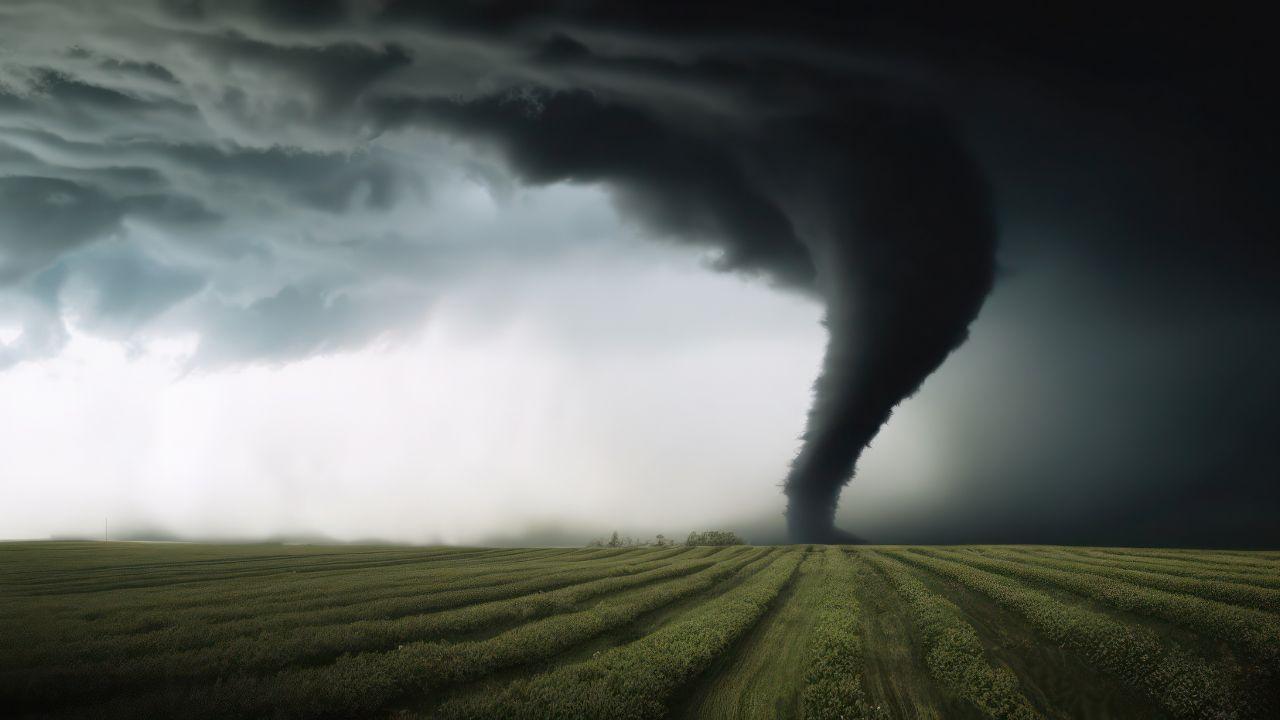
Shawn Clark, UCF Football Coach, Dies at Age 50
Shawn Clark, 50, UCF’s offensive line coach and former Appalachian State head coach, dies after rece

Saskatchewan is riding a stormy wave this year, with 17 confirmed tornadoes already touching down across the province and several more possible after a particularly volatile weekend of weather. That number already matches—or even surpasses—last year’s total of 17 confirmed storms. Now, with unsettled skies ahead, meteorologists warn the province may well exceed the full 2024 season before summer ends.
The tornado season began in spring, with numerous storm systems colliding over Saskatchewan's wide plains. Storm chasers and Environment and Climate Change Canada (ECCC) teams documented numerous funnel clouds, landspout tornadoes, hailstorms, and derecho-style wind events.
Why 2025 is shaping up to be extraordinary
The province sits at the northern edge of North America's “Tornado Alley.” Typically averaging 14 to 18 tornadoes each season—like Prairie provinces such as Alberta and Manitoba—Saskatchewan is no stranger to these systems. But this year has seen an upswing:
Confirmed tornado count: 17 confirmed as of mid-July, tying or exceeding 2024 totals.
Storm intensity: June’s storm cluster delivered 12 tornadoes in just three days, including two EF2 events .
Expanded season: Southwestern SK saw a landspout as early as April, a sign of a longer, more active season.
Understanding tornado frequency and tracking
Reliable tornado tracking in Canada dates back only a few decades; real numbers are likely underreported due to the vast, sparsely populated terrain. In 2025, the Northern Tornadoes Project reported approximately 30 confirmed tornadoes nationwide, a number surpassed only by the active U.S. season.
Saskatchewan’s landscape—flat expanses, storm-driving drylines, and summer heat—makes it a hotbed for spin-offs. Conditions this season delivered a high-energy combination of warm moist air from the south, strong cold fronts from mid-latitudes, and atmospheric shear favorable to tornado formation.
The weekend's storms: storm chasers weigh in
Weather enthusiasts reported multiple funnel clouds & landspouts over the weekend across southern Saskatchewan. Though many remained aloft, minor damage was noted in farm fields and rural landscapes . These were likely weaker EF0‑EF1 systems—but their sheer frequency poses a threat to communities and infrastructure.
Comparing to 2024 and previous record years
In 2024, Saskatchewan recorded 17 confirmed tornadoes, including several EF2 events. But that figure represented a minimal baseline; undetected or unreported systems could have pushed the count higher. Earlier years, like 2021 and 2019, saw similar activity, but 2025 stands out for its early and sustained bursts.
Tornado dangers beyond wind
While EF0 and EF1 tornadoes bring winds of 100–180 km/h, strong EF2 systems—like those confirmed this year—can reach 250 km/h. Combined with bursts of hail, straight-line winds, and torrential rain, these systems pose threats to rural homes, grain bins, power infrastructure, and transportation networks.
Local municipalities must also handle flash flood risks, soil erosion, and post-storm hazards such as fallen power lines.
Public alerts and safety measures
ECCC issued multiple tornado watches and warnings, notably around Saskatoon and North Battleford, coinciding with weekend storms. These alerts triggered standard emergency protocols: emergency operations centres mobilized, residents were urged indoors, and storm shelters were opened where available.
Many rural communities—farm families and outdoor workers—used NOAA-style apps, weather radios, and municipal alert systems to stay informed. Still, gaps remain: poor reception in remote areas, inconsistent siren use, and limited public shelter infrastructure mean each warning requires constant vigilance.
Historical reflections and climate questions
Saskatchewan has experienced intense tornado seasons before. In 2010, a tornado devastated homes in Raymore and Kawacatoose First Nation. Other years, like 1987 and 1912, saw devastating EF4‑EF5 events in Edmonton and Regina, though records suggest such extremes remain rare.
Today, climate scientists warn that global warming may increase tornado frequency, even if size and intensity remain uncertain. Warmer air can fuel stronger thunderstorms, but complex variable interactions mean predicting future tornado trends is difficult.
Monitoring efforts and technology
The Northern Tornadoes Project uses storm chasers, satellites, radar, and volunteer ground reports to track damage and rate tornadoes using the Enhanced Fujita scale. This year, many sightings were verified using drone footage and regional cameras, increasing accuracy over years past.
Efforts continue to expand citizen science participation—apps like Severe Weather* and AuroraWatch let individuals upload photos and locations during storm events, aiding meteorologists.
Community preparedness and resilience
Rural areas are reviewing local emergency plans. Fire, EMS, and provincial safety agencies are reinforcing training, supply chains, and evacuation routes. Municipalities are also discussing:
Shelter upgrades and school storm room retrofits
Public awareness campaigns on tornado safety (basements, interior walls, mobile homes)
Business continuity strategies for agriculture, utilities, and remote operations
Farmers are assessing field shelter availability, grain bin strength, and backup generators, recognizing how tornadoes can disrupt spring planting, summer fields, and fall harvest.
Future forecast and current season outlook
ECCC predicts more thunderstorms heading into late July and August, which could produce additional tornado outbreaks. Forecast models show shifting jet streams and seasonal humidity suggesting continued storm potential.
Historically, highest tornado months are June through August, with August often quieter. But 2025’s early April landspout and mid-June surge make forecasters cautious. Some predict Saskatchewan could end 2025 with 20–25 confirmed tornadoes, well above typical average.
Why tracking matters
Reliable tornado data helps ECCC refine building codes, insurance models, and emergency planning. For the Northern Tornadoes Project, each confirmed path provides insight into frequency, risk zones, and future trends.
Communities also benefit—know your risk, build accordingly, and share information.
Beyond numbers: tornadoes and well‑being
Even weaker tornadoes can spark anxiety in children, disrupt rural economies, and cause lasting property damage. Mental health services are being offered post-event, with educators training staff to recognize trauma in students. Agricultural organizations are helping families navigate financial stress after crop destruction and infrastructure loss.
A record‑setting weather frontier
Saskatchewan's 2025 tornado season is unfolding as one of the most active in recent memory. With 17 confirmed tornadoes already reported—and more likely on the horizon—the province is on track to surpass its 2024 record. Tracking, alerts, community planning, and homeowner resilience are more important than ever.
This season highlights both the marvel and menace of Prairie storms—nature’s power is beautiful, but also unpredictable and dangerous. Whether you're watching the skies as a storm chaser, taking shelter at home, or preparing your farm, understanding this challenge is vital.
Let’s stay alert. Let’s plan ahead. The storms show no sign of letting up—and Saskatchewan is watching and ready.